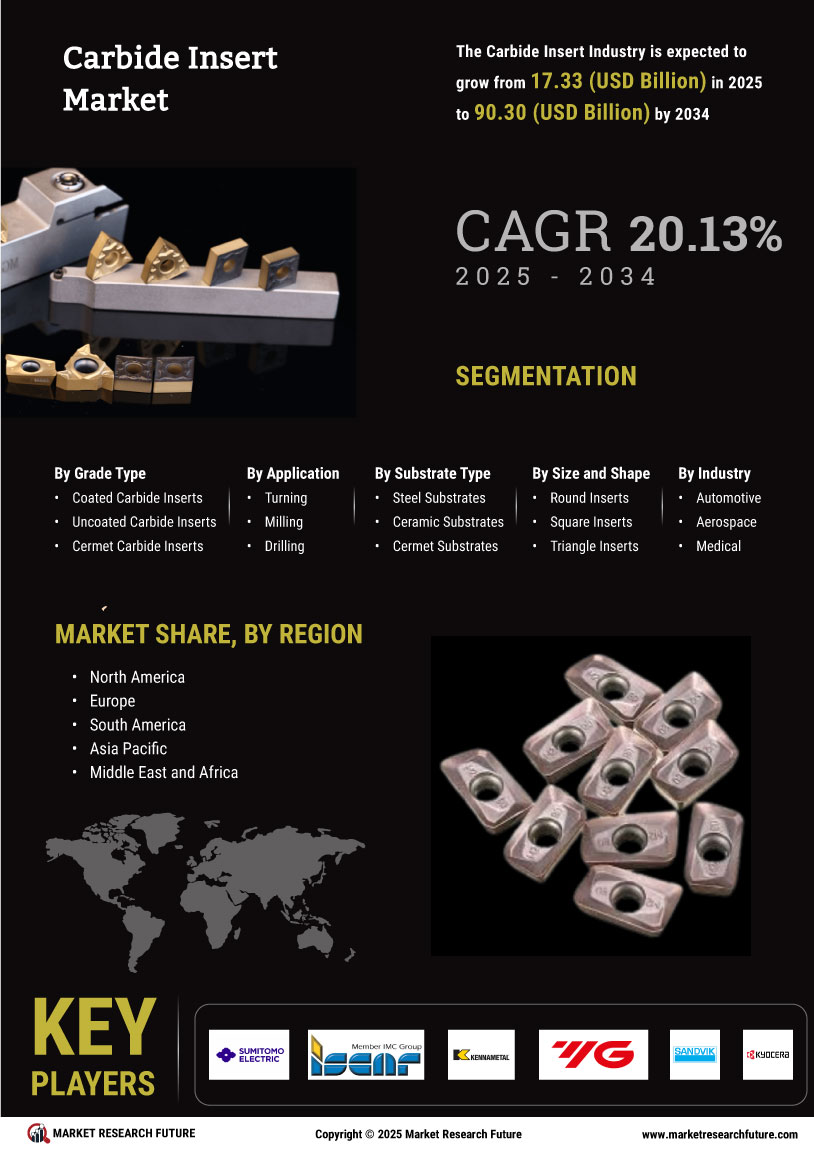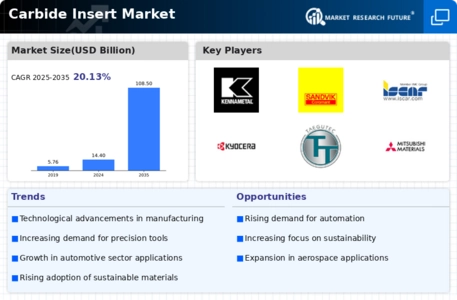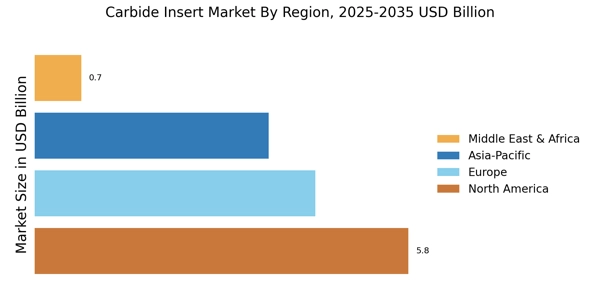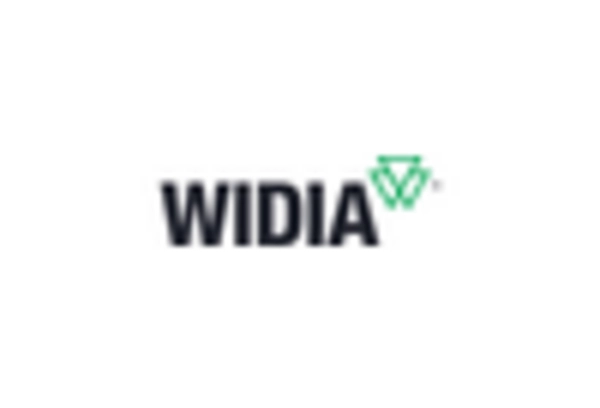Growth in the Automotive Sector
The automotive sector's expansion is a significant driver for the Carbide Insert Market. With the rise of electric vehicles and advancements in automotive technology, manufacturers are increasingly adopting precision machining techniques to produce complex components. The automotive industry is projected to grow at a rate of 5% annually, which is likely to increase the demand for high-quality carbide inserts. These tools are essential for machining engine components, transmission parts, and other critical elements. As automotive manufacturers strive for efficiency and quality, the Carbide Insert Market stands to gain from this upward trend, as more companies seek reliable cutting solutions.
Rising Demand for Precision Machining
The increasing demand for precision machining across various sectors appears to be a primary driver for the Carbide Insert Market. Industries such as aerospace, automotive, and medical are increasingly relying on precision components, which necessitate the use of high-performance cutting tools. The market for precision machining is projected to grow at a compound annual growth rate of approximately 6.5% over the next few years. This growth is likely to bolster the demand for carbide inserts, which are known for their durability and ability to maintain sharpness under high-stress conditions. As manufacturers seek to enhance productivity and reduce waste, the Carbide Insert Market is expected to benefit significantly from this trend.
Emerging Markets and Industrialization
Emerging markets are witnessing rapid industrialization, which is contributing to the growth of the Carbide Insert Market. Countries in Asia and South America are investing heavily in manufacturing infrastructure, leading to increased demand for cutting tools. The industrial sector in these regions is expected to grow at a rate of 6% annually, driven by the establishment of new manufacturing facilities and the modernization of existing ones. As these markets expand, the need for high-quality carbide inserts will likely rise, as manufacturers seek to improve their production capabilities. This trend presents a significant opportunity for the Carbide Insert Market to tap into new customer bases and expand its reach.
Technological Innovations in Cutting Tools
Technological advancements in cutting tool materials and designs are driving the evolution of the Carbide Insert Market. Innovations such as coated carbide inserts and advanced geometries are enhancing the performance and lifespan of these tools. For instance, the introduction of multi-layer coatings has improved wear resistance and reduced friction, leading to better machining efficiency. The market for coated carbide inserts is anticipated to witness a growth rate of around 7% annually. As manufacturers continue to invest in research and development, the Carbide Insert Market is likely to see a surge in demand for these advanced tools, which can meet the rigorous demands of modern machining processes.
Increased Focus on Manufacturing Efficiency
The ongoing emphasis on manufacturing efficiency and cost reduction is influencing the Carbide Insert Market. Companies are increasingly adopting lean manufacturing principles, which prioritize waste reduction and process optimization. This shift is driving the demand for high-performance cutting tools that can enhance productivity and reduce cycle times. The market for carbide inserts is expected to grow as manufacturers seek tools that offer superior performance and longevity. It is estimated that the adoption of advanced cutting tools could lead to a 15% increase in machining efficiency. Consequently, the Carbide Insert Market is likely to experience growth as businesses invest in tools that align with their efficiency goals.


















Leave a Comment